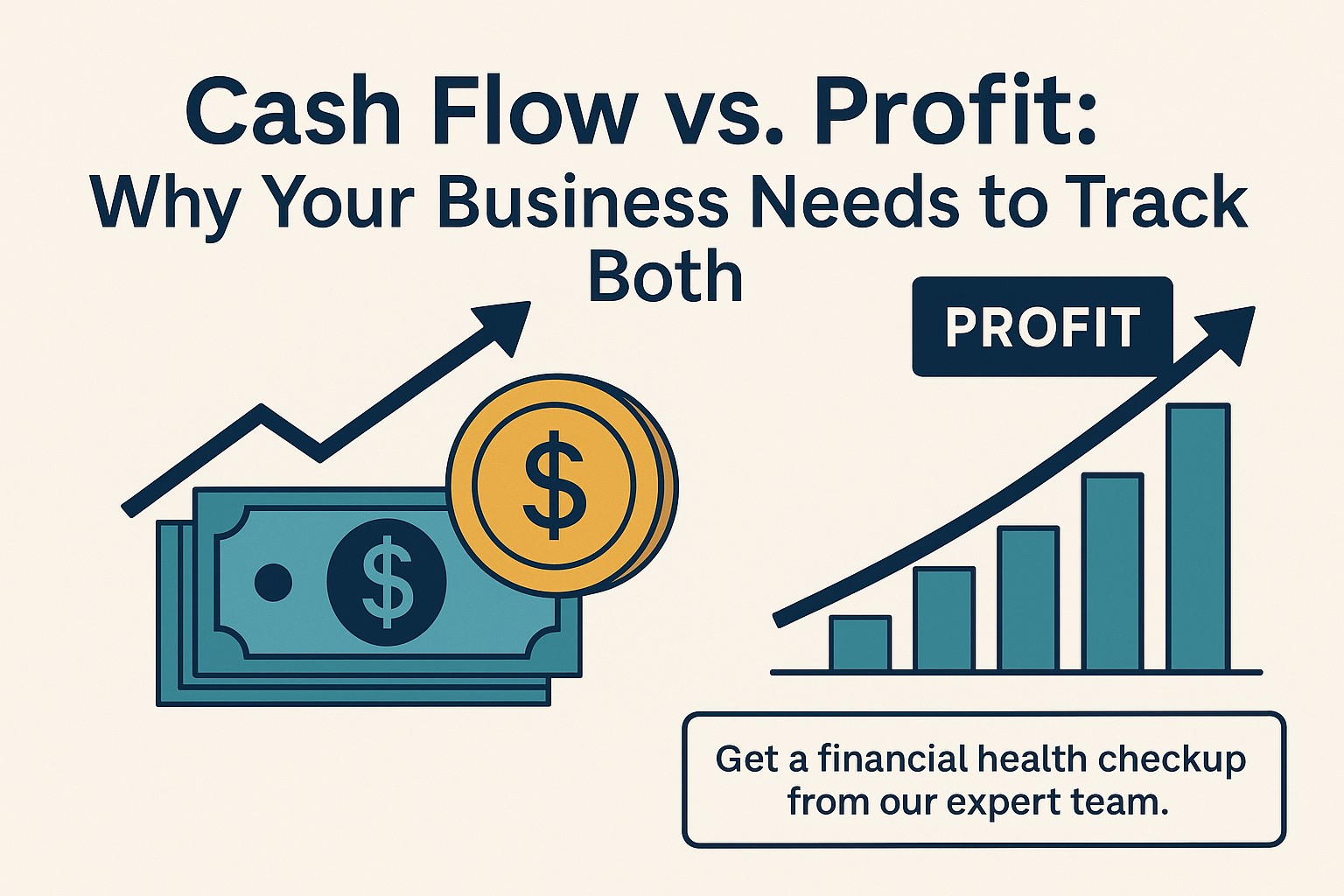
Cash Flow vs. Profit: Why Your Business Needs to Track Both
Most business owners think profit equals success. But that’s not always true. In fact, many profitable businesses fail—not because they aren’t making money, but because they run out of cash. Understanding the difference between cash flow and profit is critical for long-term success. These two financial metrics may sound similar, but they tell very different stories about the health of your business.
In this guide, we’ll break down what cash flow and profit really mean, explain how they impact your operations, and show you why tracking both is essential for growth.
Cash Flow vs. Profit: Why Your Business Needs to Track Both – Table of Contents
What Is Profit?
Profit is what’s left over after all your expenses have been subtracted from your revenue. It’s typically measured in three ways:
- Gross Profit = Revenue – Cost of Goods Sold (COGS)
- Operating Profit = Gross Profit – Operating Expenses
- Net Profit = Operating Profit – Taxes, Interest, and Other Expenses
Net profit is the number most people refer to when they say “bottom line.” It’s a useful metric for showing how efficiently your business turns revenue into income.
But here’s the catch: you can have profit on paper and still be broke. That’s where cash flow comes in.
What Is Cash Flow?
Cash flow tracks the actual movement of money in and out of your business bank account. It answers the question: Do you have enough money to pay your bills, payroll, or rent—today?
There are three types of cash flow:
- Operating Cash Flow – Money from your core business operations (sales, services, etc.)
- Investing Cash Flow – Money from buying or selling assets (equipment, property, etc.)
- Financing Cash Flow – Money from loans, investors, or debt repayments
You can’t pay your team or suppliers with net profit—it’s the cash in the bank that keeps the lights on.
Why Tracking Only One Is a Dangerous Mistake
Here’s a real-world scenario:
You close a $100,000 contract and count it as revenue. Your profit looks great. But the client won’t pay for 90 days. Meanwhile, you have $60,000 in expenses due next month. Unless you have enough cash on hand, you’re now in trouble—despite being profitable.
This happens more often than most entrepreneurs realize. Profit reflects accounting rules, not reality. That’s why many fast-growing businesses run into cash flow problems—they’re profitable on paper but lack the liquidity to keep operating.
The Key Differences at a Glance
| Aspect | Profit | Cash Flow |
|---|---|---|
| Definition | Revenue minus expenses | Money flowing in and out |
| Timeframe | Based on accrual accounting | Based on actual cash transactions |
| Tells you… | If you made money | If you can pay your bills |
| Common Issue | Can be positive while cash is negative | Doesn’t account for future profit |
Why Small Businesses Must Track Both
1. Growth Can Create a Cash Crunch
When you’re growing, you often take on more expenses—hiring, new software, increased inventory. If payments from customers lag, you can burn through cash quickly. Good cash flow forecasting prevents growth from becoming a liability.
2. Lenders and Investors Care About Cash Flow
You might show a solid profit, but banks and investors will often ask to see a cash flow statement to determine if you’re actually solvent. It’s their way of checking whether your business is truly sustainable.
3. It Impacts Strategic Decision-Making
Want to launch a new product, open a second location, or expand your team? You need more than just a profitable P&L. You need to know if you’ll have the cash available at each step.
Common Pitfalls and How to Avoid Them
🚫 Relying Solely on Your Profit & Loss Statement
Your P&L doesn’t show loan repayments, asset purchases, or accounts receivable. That means you’re missing a huge part of the picture if you’re not reviewing your cash flow statement too.
✅ Solution: Use all three core financial statements—Profit & Loss, Balance Sheet, and Cash Flow—to get a complete view.
🚫 Not Creating a Cash Flow Forecast
Many small businesses wing it. They assume future sales will cover future expenses without any plan in place.
✅ Solution: Create a rolling 13-week cash flow forecast that includes upcoming payments and collections. It’s a game changer for visibility and confidence.
🚫 Mixing Business and Personal Finances
This is especially common with small business owners. If you’re paying personal expenses out of your business account, you’re sabotaging your cash visibility.
✅ Solution: Keep separate accounts and pay yourself a set salary or draw. This gives you a clearer view of what’s really available for operations.
How Bouldin & Associates Can Help
At Bouldin & Associates, we work with small and mid-sized businesses to build financial systems that go beyond the surface. We don’t just look at your profit—we help you forecast, manage, and grow your cash flow too.
Our part-time CFO services and project-based accounting support are designed to:
✅ Ensure your business has cash when you need it
✅ Track financial performance across profit and liquidity
✅ Help you scale responsibly, not recklessly
✅ Identify red flags before they become disasters
You shouldn’t have to guess whether your business is healthy.
✅ Ready for a Financial Health Checkup?
Don’t wait until your bank account sends you a warning. Whether you’re struggling to understand your financial reports or planning your next growth phase, we’re here to help.

